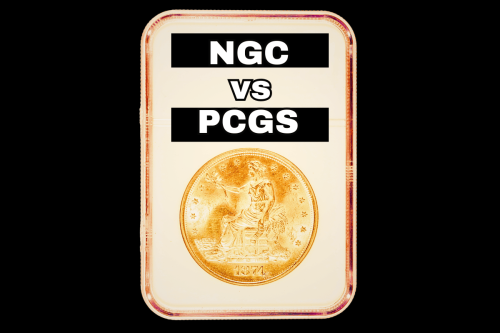
History of the Penny | Value of the U.S. One-Cent Coin
From the palms of your hands to the depths of your pockets, the penny has journeyed through American history as more than just currency. This humble coin, often overlooked and sometimes forgotten at the bottom of a drawer, carries the story of a nation's evolution, innovation, and the enduring spirit of its people.
Why does this smallest denomination of U.S. currency hold a tale so vast and compelling? As we unravel the history of the penny, you'll discover its significance not only in commerce but in the cultural tapestry of the United States.
The narrative of this one-cent coin offers a unique lens through which we can explore the broader themes of economy, identity, and history. Read on as we cover the origins and transformations of the penny, and why understanding its journey is crucial for anyone interested in the heritage and future of U.S. coins.
The Birth of the Penny
The penny has a rich history that dates back to the late 18th century. The creation of the first U.S. coins marked a significant moment in the country's early financial history.
The U.S. Mint produced the first official one-cent coin in 1793. It was known as the Chain Cent for its design featuring a chain of 13 links representing the original 13 colonies.
This design, however, did not last long due to public dissatisfaction. It was quickly replaced with the Wreath Cent, featuring a more palatable wreath design on the reverse.
Early pennies were made of pure copper, a choice that reflects the era's reliance on available materials and the value placed on the coin. Copper was abundant and relatively easy to mint into coins which made it an ideal choice for the burgeoning nation's currency.
However, the history of coins, especially the penny, is also a history of adaptation and change. Over the years, the composition of the penny has undergone several significant changes in response to:
- Metal shortages
- Economic factors
- Advancements in minting technology
By the mid-19th century, the U.S. Mint began experimenting with different metal compositions to address the rising cost of copper. This led to the introduction of the Flying Eagle Cent in 1856, which was smaller and made from a mix of copper and nickel.
The change in composition marked a pivotal shift in the manufacturing of U.S. coins, setting a precedent for future alterations in coin compositions.
The most notable change came in 1982 when the penny's composition was altered from 95% copper to a core of zinc coated with copper. This adjustment was primarily due to the rising cost of copper which made the production of a pure copper penny more expensive than its face value.
Transition and Transformation
In 1909, the penny underwent a significant transformation with the introduction of the Lincoln cent. This marked the first time a real person's image appeared on U.S. currency.
The change celebrated the 100th anniversary of President Abraham Lincoln's birth and reflected his esteemed place in American history. The Lincoln cent was designed by Victor David Brenner and featured Lincoln's profile on the obverse and initially, two wheat ears surrounding the words "One Cent" on the reverse.
The Lincoln cent has seen various changes in its design and composition over the years, each reflecting a different era in American history.
World War II Adjustments
During World War II, the composition of the penny was temporarily changed. In 1943, to conserve copper for the war effort, pennies were made from zinc-coated steel. These steel pennies, however, faced issues such as rusting and being mistaken for dimes.
Recognizing these problems, the Mint reverted to using copper in 1944. These were sourced from spent ammunition shells; a resourceful way of maintaining the penny's production without straining the country's copper supplies.
Memorial and Shield Designs
In 1959, on the 150th anniversary of Lincoln's birth, the reverse design was changed from the wheat ears to the Lincoln Memorial, symbolizing Lincoln's lasting legacy. This design remained until 2009 when the penny's reverse was updated to commemorate Lincoln's 200th birthday with four different designs reflecting his life and legacy.
In 2010, the penny adopted its current design: the Union Shield. This represents Lincoln's preservation of the United States as a single unified country.
The Significance of Composition Changes
Over the years, the penny's composition has shifted in response to economic factors and material availability. The post-war pennies were primarily made of copper until 1982 when the Mint introduced a predominantly zinc penny with a thin copper coating to address the rising cost of copper.
The Penny in Modern Times
In the early 1980s, the composition of the penny sparked a significant shift. It moved from a coin made primarily of copper to one consisting mainly of zinc. This change, initiated in 1982, was driven by the rising cost of copper which made it economically impractical to continue producing pennies predominantly from copper.
The new pennies featured a zinc core with a thin copper plating, a composition that has been maintained to this day. This transition marked one of the most notable changes in the history of U.S. currency and reflects the impact of economic factors on coin production.
The Debate Over Cost and Usefulness
The modern penny has been at the center of a long-standing debate concerning its cost versus its usefulness. Producing the penny costs more than its face value, a fact that has led many to question whether it should remain in circulation.
Critics argue that the penny is increasingly irrelevant in today's digital economy, where electronic transactions are becoming more prevalent, and small transactions can be rounded to the nearest nickel without significant impact.
However, proponents of the penny argue for its continued production, citing its historical significance and role in teaching financial literacy. Moreover, the penny remains popular among collectors, with various types of pennies being sought after for their unique designs and historical value.
The Future of the Penny
As discussions about the penny's future continue, its role in American currency remains a topic of interest and debate. Whether for its economic impact or its sentimental value, the penny's journey through American history is far from over.
The ongoing debate reflects broader questions about the nature of money, the evolution of currency, and how societies assign value to the smallest units of their economies. For now, the penny continues to be a tangible link to America's past, even as it faces an uncertain future in the digital age.
A Gateway to Precious Metal Investing
Collecting coins, especially pennies, stands as a testament to the rich tapestry of American history and economy. This hobby opens a window to the past by offering a hands-on experience of the nation's journey through time.
For many, the humble penny serves as the first step into the broader world of numismatics and, eventually, precious metal investing.
The Draw of Diverse Designs
The types of coins available to collectors are as varied as they are fascinating. From the early days of the large copper cents to the modern zinc-coated pieces, each type offers a unique story.
Collectors find joy in hunting for rare dates, mint marks, and even error coins, which are prized for their anomalies. This diversity not only makes penny collecting accessible but also intriguing, as each find can add a distinctive piece to one's collection.
The Educational Value of Collecting
Collecting coins goes beyond the simple accumulation of currency. It's an educational journey. Through collecting, enthusiasts learn about the history of coins, the intricacies of the U.S. Mint's production processes, and the economic factors that have influenced coin designs and materials over the years.
This knowledge lays a solid foundation for understanding the precious metals market, as the principles of scarcity, demand, and historical significance apply across the board.
A Stepping Stone to Precious Metal Investing
For those looking to venture into precious metal investing, starting with pennies can be an excellent way to get their feet wet. The skills developed through collecting coins (such as patience, research, and discernment) are directly transferable to precious metal investing.
Moreover, the understanding of market dynamics and the historical context gained from coin collecting provides invaluable insights that can inform investment strategies.
Building a Collection with Purpose
As collectors transition from accumulating pennies to investing in precious metals, the importance of guidance cannot be overstated. Just as each penny tells a story, each investment in precious metals is a step towards achieving personal financial goals.
Whether it's securing one's financial future or preserving wealth for generations, the principles of collecting coins lay the groundwork for making informed and strategic investment decisions in the world of precious metals.


Learn the History of the Penny
The journey through the history of the penny reveals more than just the evolution of a coin. It uncovers a narrative rich with innovation, cultural shifts, and economic milestones.
At the U.S. Gold Bureau, we understand that each coin, from the humble penny to the most precious gold piece, holds a story and an opportunity. Our commitment to guiding you through the nuances of precious metals investment is rooted in a deep appreciation for these stories and the potential they hold for your portfolio.
Ready to explore the wealth of opportunities in precious metals? Grab your free investor guide today.








